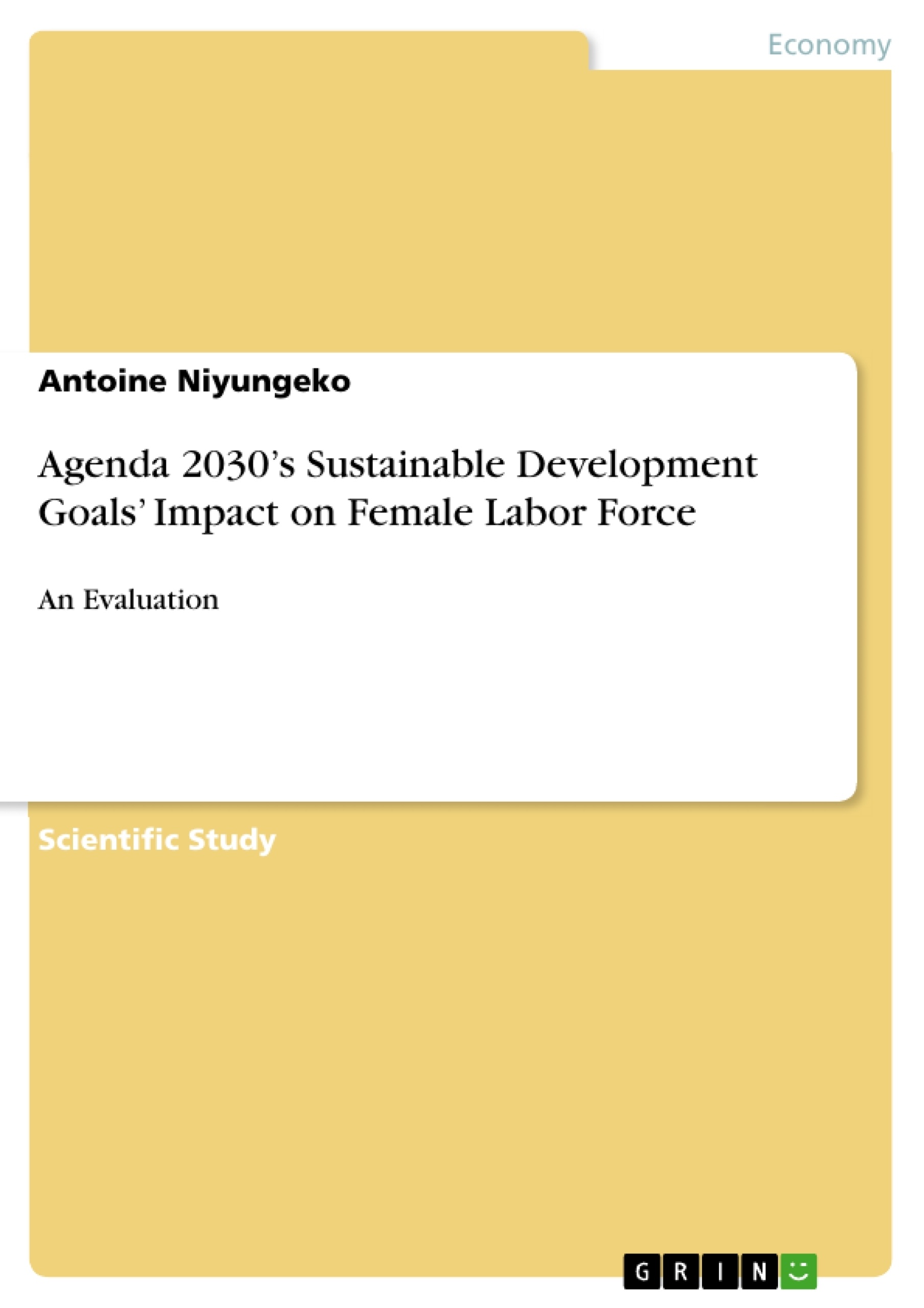The purpose of this study is to evaluate, and compare the performance made by low middle income, and up middle income countries regarding increasing female labor force participation, from 2015 to 2019. Data related to 43 low middle income, and 59 upp middle income were collected.
Using paired sample t-test, repeated measures ANOVA and post hoc test, the findings reveals that low middle income countries made statistically significant progress regarding increasing female labor force participation from 2015 to 2019. However, the findings show also that upper middle income countries did not make statistically significant progress regarding increasing female labor force participation between 2015 to 2019. The conclusion is that some countries are implementing the agenda 2030 on Sustainable Development Goals.
The study shows finally that the COVID-19 pandemic narrowed employment as there is no statisticaly significant difference between 2018 and 2019. The implementation of the agenda 2030 on SDGs is a world wide concerns. All contries should engage in gender equality,and no country should lag behind as the study demonstrated it for upp middle countries. A clear mechanism of evaluating the implementation of the Agenda 2030 shoud extend at all objectives to find deviation at take corrective measures.
Inhaltsverzeichnis (Table of Contents)
- ABSTRACT
- 1. INTRODUCTION
- 2. LITERATURE REVIEW
- 3. DATA METHODOLOGY
- 3.1. DATA
- 3.2. DATA ANALYSIS
- 4. EMPIRICAL RESULTS AND DISCUSSION
- 4.1. DESCRIPTIVE STATISTICS
- 4.2. RESULT ANALYSIS
- 5. CONCLUSION AND POLICY IMPLICATIONS
- REFERENCES
- APPENDIX 1
Zielsetzung und Themenschwerpunkte (Objectives and Key Themes)
This study aims to evaluate the progress made by low and upper middle-income countries in increasing female labor force participation from 2015 to 2019, specifically focusing on the impact of the Agenda 2030's Sustainable Development Goals (SDGs) on gender equality, particularly SDG 5.
- The impact of Agenda 2030 on female labor force participation in low and upper middle-income countries
- The effectiveness of the SDGs in addressing gender equality issues
- The role of gender equality in achieving sustainable development
- The potential benefits of reducing gender inequality for economic growth
- The challenges and opportunities for enhancing female labor force participation in different regions
Zusammenfassung der Kapitel (Chapter Summaries)
- ABSTRACT: This chapter provides a concise overview of the study, highlighting the objective of evaluating the progress made by different income groups in increasing female labor force participation. It also presents the key findings, indicating a statistically significant progress in low middle-income countries but not in upper middle-income countries.
- 1. INTRODUCTION: This chapter introduces the context of sustainable development through the Agenda 2030 and the importance of evaluating its impact. It emphasizes the need to address gender inequality, specifically focusing on the objectives of SDG 5. The chapter highlights the existing literature supporting gender discrimination and the need for a comprehensive evaluation of progress.
- 2. LITERATURE REVIEW: This chapter delves deeper into the existing literature regarding gender discrimination and its impact on labor markets. It presents various studies that highlight the negative consequences of gender inequality on economic growth and human capital development. The chapter emphasizes the importance of achieving gender equality as a crucial pillar for sustainable development.
- 3. DATA METHODOLOGY: This chapter details the methodology used for the study, including the data sources, data collection procedures, and data analysis techniques. It describes the sample size and the specific countries included in the analysis.
- 4. EMPIRICAL RESULTS AND DISCUSSION: This chapter presents the findings of the data analysis, examining the progress made by low and upper middle-income countries in increasing female labor force participation from 2015 to 2019. The chapter discusses the key findings, including the statistical significance of the results and potential explanations for the observed trends.
Schlüsselwörter (Keywords)
The study focuses on the evaluation of the impact of the Agenda 2030's Sustainable Development Goals on female labor force participation, particularly focusing on gender equality and the effectiveness of SDG 5. Key terms include female, labor, participation, evaluation, sustainable, development, gender inequality, economic growth, and human capital.
- Citation du texte
- Master Antoine Niyungeko (Auteur), 2020, Agenda 2030’s Sustainable Development Goals’ Impact on Female Labor Force, Munich, GRIN Verlag, https://www.grin.com/document/918690



